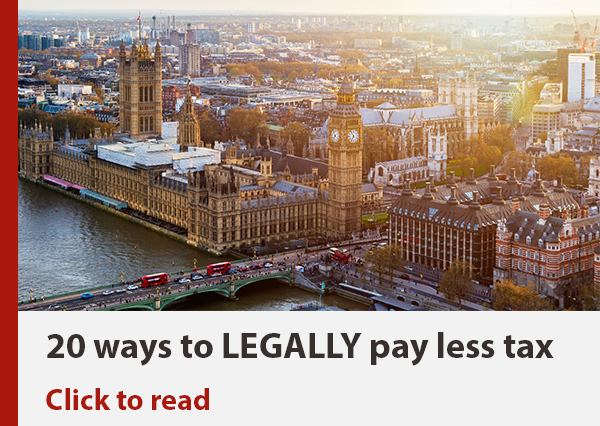List of tax codes: check you're on the right UK tax code for 2024/25

Don't know what your tax code means? In the UK, we have a list of tax codes that determine how much money you have to hand back to the taxman each year. Here's how to check you're paying the right amount of tax during the 2024/25 financial year.
Sections
- The L tax code: for most taxpayers
- The K tax code: for untaxed income
- The S tax code: for Scottish Income Tax
- The T and 0T tax codes: for £100,000+ income
- M and N tax codes: for the Marriage Allowance
- BR, D0 and D1 tax codes: for second jobs and pensions
- The NT code: when you pay no tax
- W1 and M1: emergency tax codes
- If your tax code is wrong: how to change it
- Understanding all the codes on your payslip
The L tax code: for most taxpayers
If you look at the list of tax codes in the UK, you'll find they're almost always made up of a series of numbers and a letter. The most common letter is L.
This means that you are under 65 and eligible for the standard tax-free Personal Allowance – this is the amount you can earn before Income Tax kicks in.
The basic Personal Allowance for 2024/25 (the tax year runs from April to April each year), applicable to low and middle earners with an annual income of less than £100,000, is £12,570.
This exact allowance figure (divided by 10) will precede the letter in your code. So for the 2024/25 financial year, 1257L will be one of the most common codes.
The K tax code: for untaxed income
Another code that many people may have is the K code.
This is essentially the reverse of an L code and is used when your level of untaxed additional income exceeds your Personal Allowance.
This can happen if you are paying tax that you owe from a previous year through your wages or pension, getting State benefits that you need to pay tax on or getting benefits from work.
To take a step back: the taxman wants to know about any additional income you get from your employer – often this will be in the form of employee benefits. This income eats away and reduces your Personal Allowance.
Consider this example: your employer provides you with a brand-new BMW company car to use both on the job and at home.
All your petrol is paid for, as is the licensing and tax associated with the vehicle.
The taxman will come up with a figure for the income you’re receiving from this (for personal journeys) and cut it from your Personal Allowance.
This will give you a tax code that still ends in L, but has a smaller figure preceding it.
So, if the taxman decided that you were getting £6,000 of income from your company car, you will see a code of 657L on your new tax code (£12,570 - £6,000 = £6,570).
However, if this additional income exceeds your Personal Allowance, wiping it out completely, you’ll be shunted onto a K code.
To continue our example – if the taxman decides that you’re receiving £15,000 of additional income from the company BMW, you’ll see 243K as your tax code (£15,000 ‒ £12,570 = £2,430).
This means that you need to pay Income Tax on all of your earnings plus the additional income from the company car that exceeds your Personal Allowance.
The S tax code: for Scottish Income Tax
This code is used to indicate if your income or pension is taxed using the rates in Scotland.
Your tax code will be S1257L if you pay Scottish Income Tax and get the standard Personal Allowance.
The T and 0T tax codes: for £100,000+ income
If you’re a high-earner, the situation starts to get a little more complex.
For every £2 you earn over £100,000, you’ll lose £1 of your Personal Allowance.
At this point you should be put on a T code, preceded by a figure showing the level of allowance you have left, providing any company benefits aren’t forcing you onto a K code.
When your income reaches £125,140, you’ll lose all of your allowance and your whole income will be subject to the appropriate rates of Income Tax. At this point, you’ll be put on a 0T code.
M and N tax codes: for the Marriage Allowance
You may be able to pass 10% of your Personal Allowance onto your spouse thanks to the Marriage Allowance.
If your annual income is £12,570 or less, and your partner is not a higher-rate taxpayer, you can pass on 10% of your Personal Allowance (£1,257 currently) to your other half.
The M code means that you have received 10% of your partner's allowance, while the N code means you have transferred 10% of your allowance to your partner.
BR, D0 and D1 tax codes: for second jobs and pensions
You’ll usually receive a tax code for each source of income you receive.
If you have more than one income, you’ll be asked to state which is your main source, and this will have the appropriate level of Personal Allowance applied to it.
All other income will all be taxed without any allowance. If you pay at basic rate, additional income sources will receive a BR code, higher rate payers will get a D0 code and those liable for the additional rate will get the D1 code.
The NT code: when you pay no tax
An NT code will come through if no tax is to be taken.
This is usually in very specific cases, such as musicians who are regarded as self-employed and not subject to PAYE.
W1 and M1: emergency tax codes
An emergency tax code is issued if HMRC does not have enough information about you to send your employer the correct code.
This usually happens if you start your first job and get your first source of income part of the way into the financial year, or you haven’t got a P45 from a previous employer.
The first part of the emergency tax code for 2024/25 is 1257 – the same as the basic Personal Allowance code. This normally ensures you receive the basic amount of monthly tax-free pay. But it doesn’t take into account any other relief or allowances.
However, there will also be either W1 (for weekly pay) or M1 (for monthly pay). This signifies that you are being taxed as if it is the first week or month of the financial year.
If it’s a non-standard pay period, then it might end in X.
If you start work part of the way into the year, a W1 or M1 code could see you overpay in tax – as it is spreading your Personal Allowance over too many months.
For example, if you start your first job five months into the financial year, you should receive a seventh of your Personal Allowance in each monthly wage packet. A W1 or M1 code will only give you a twelfth – meaning that you will be overpaying.
However, when you hand over your P45 or P46 to your new employer, your tax code should change – and you should be reimbursed for any losses.
If you get to the end of the financial year and still haven’t been reimbursed with the overpaid tax, you should get it back in a refund.
If your tax code is wrong: how to change it
If you think your tax code is wrong you need to tell HMRC as soon as possible so it can be corrected.
You’ll need to have your tax reference and National Insurance number to hand – these can be found on your payslips or any letters from HMRC.
You can get hold of all of the contact details for HMRC by heading to its website.
You can also read our guide to contacting the taxman as painlessly as possible.
Understanding all the codes on your payslip
Being on the wrong tax code isn't the only thing that could lead to you receiving more or less income than you're entitled to.
To help out, we've put together this guide that explains all the various codes and jargon hidden in your monthly payslip.
It also covers what to do if you find any issues.
Comments
Do you want to comment on this article? You need to be signed in for this feature
